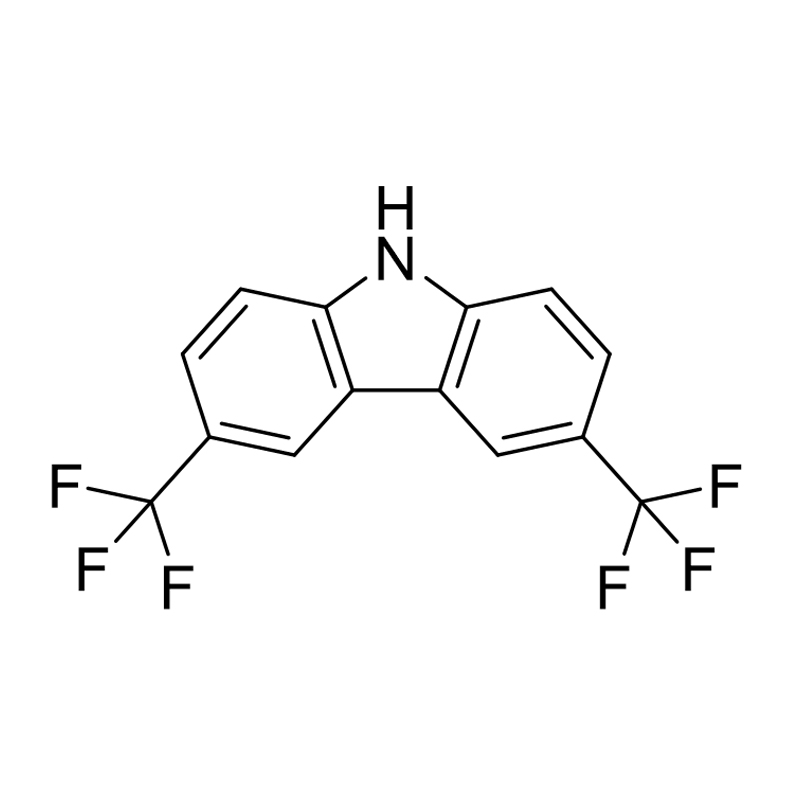How Are Naphthalene Derivatives Used in Surfactant Production?
Nov 14,2025What Role Do Pyrimidine Derivatives Play in Biological Systems?
Nov 07,2025Thiophene Derivatives: Uses, Properties, and Applications
Oct 31,2025How Do Triazine Derivatives Act as Antimicrobial or Antifungal Agents?
Oct 24,2025What Makes Carbazole Derivatives Chemically Stable?
Oct 17,2025Carbazole derivatives are a class of organic compounds that are widely studied for their unique electronic properties and potential applications in organic electronics, photonics, and medicinal chemistry. The substituents attached to the carbazole core can significantly influence the physical, chemical, and electronic properties of these compounds. Here are some common substituents found on carbazole derivatives and their effects:
Alkyl Groups (e.g., Methyl, Ethyl, Propyl):
Effect: Alkyl substituents generally increase the solubility of carbazole derivatives in organic solvents. They can also influence the electronic properties by stabilizing the excited states, thereby affecting the photoluminescence and charge transport properties. For instance, methyl substitution can enhance light-emitting properties, making these derivatives suitable for organic light-emitting diodes (OLEDs).
Aryl Groups (e.g., Phenyl, Naphthyl):
Effect: Aryl substituents can lead to increased π-conjugation, enhancing the electronic delocalization within the molecule. This can improve the charge mobility and light absorption characteristics, which is beneficial for applications in organic solar cells and light-emitting devices. Moreover, the presence of electron-donating or electron-withdrawing aryl groups can tune the energy levels of the carbazole derivatives.
Electron-Donating Groups (e.g., Methoxy, Alkoxy):
Effect: Electron-donating groups enhance the electron density of the carbazole moiety, leading to increased reactivity and better hole-transport properties. In the context of organic semiconductors, this can result in improved charge carrier mobility and photoluminescence, making these derivatives valuable for OLEDs and organic photovoltaics.

Electron-Withdrawing Groups (e.g., Nitro, Carbonyl, Cyano):
Effect: Electron-withdrawing groups tend to decrease the electron density on the carbazole core, which can stabilize cationic species and enhance the electron-accepting properties. These modifications can create strong intermolecular interactions that are beneficial in certain electronic applications, such as in organic field-effect transistors (OFETs).
Halogens (e.g., Fluoro, Chloro, Bromo, Iodo):
Effect: Halogen substituents can influence both the electronic properties and the solubility of carbazole derivatives. For example, fluorination can enhance the thermal and photostability of the compounds while also affecting their optical properties. Halogens can also participate in halogen bonding, which can lead to interesting self-assembly behaviors and supramolecular chemistry.
Functional Groups (e.g., Hydroxyl, Amino, Carboxyl):
Effect: The introduction of functional groups can significantly alter the reactivity and solubility of carbazole derivatives. Hydroxyl and amino groups, being polar, can enhance solubility in polar solvents and may introduce hydrogen bonding capabilities. This can be particularly useful in biological applications, where solubility and interaction with biological targets are crucial.
The choice of substituents on carbazole derivatives plays a pivotal role in defining their properties and potential applications. Alkyl and aryl groups can enhance solubility and electronic properties, while electron-donating and -withdrawing groups can tune the electronic levels for specific uses in optoelectronic devices. Functional groups add further versatility, opening avenues for biological applications and increased reactivity. Understanding how these substituents affect the properties of carbazole derivatives is essential for designing new materials with tailored functionalities for advanced technologies.
Copyright © 2023 Suzhou Fenghua New Material Technology Co., Ltd. All Rights Reserved.
Custom OLED Material Intermediate Manufacturers

